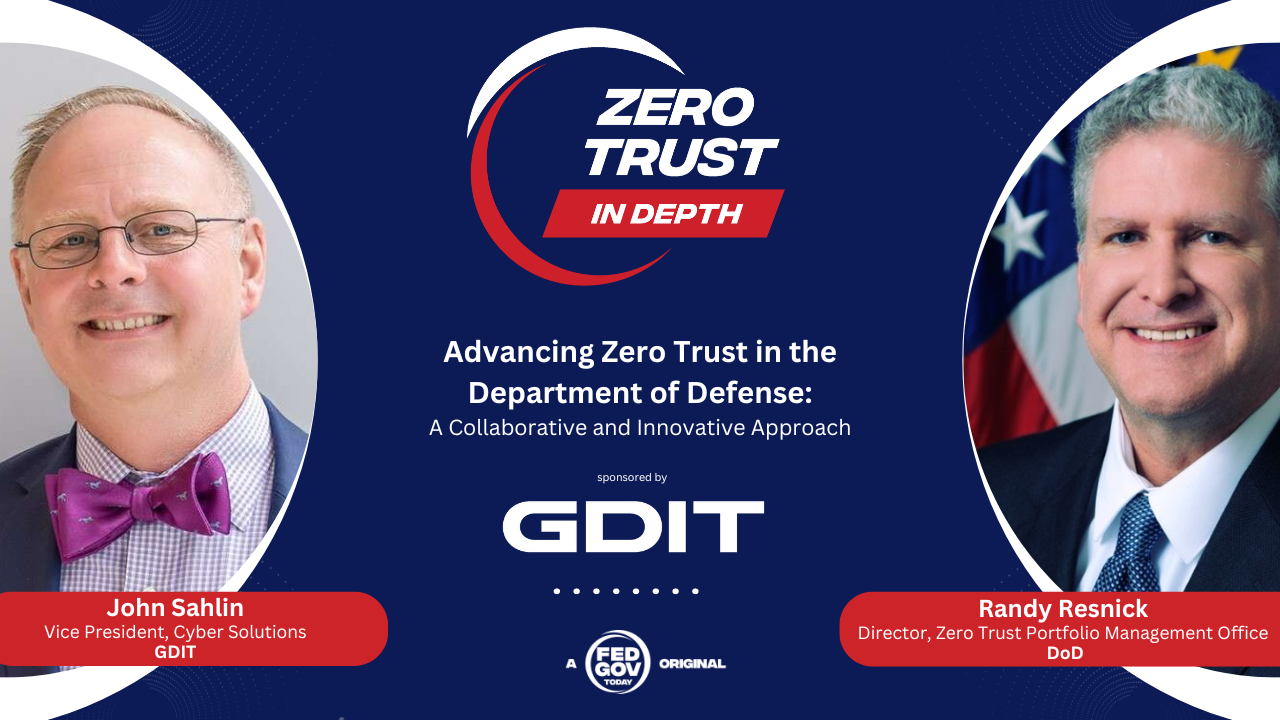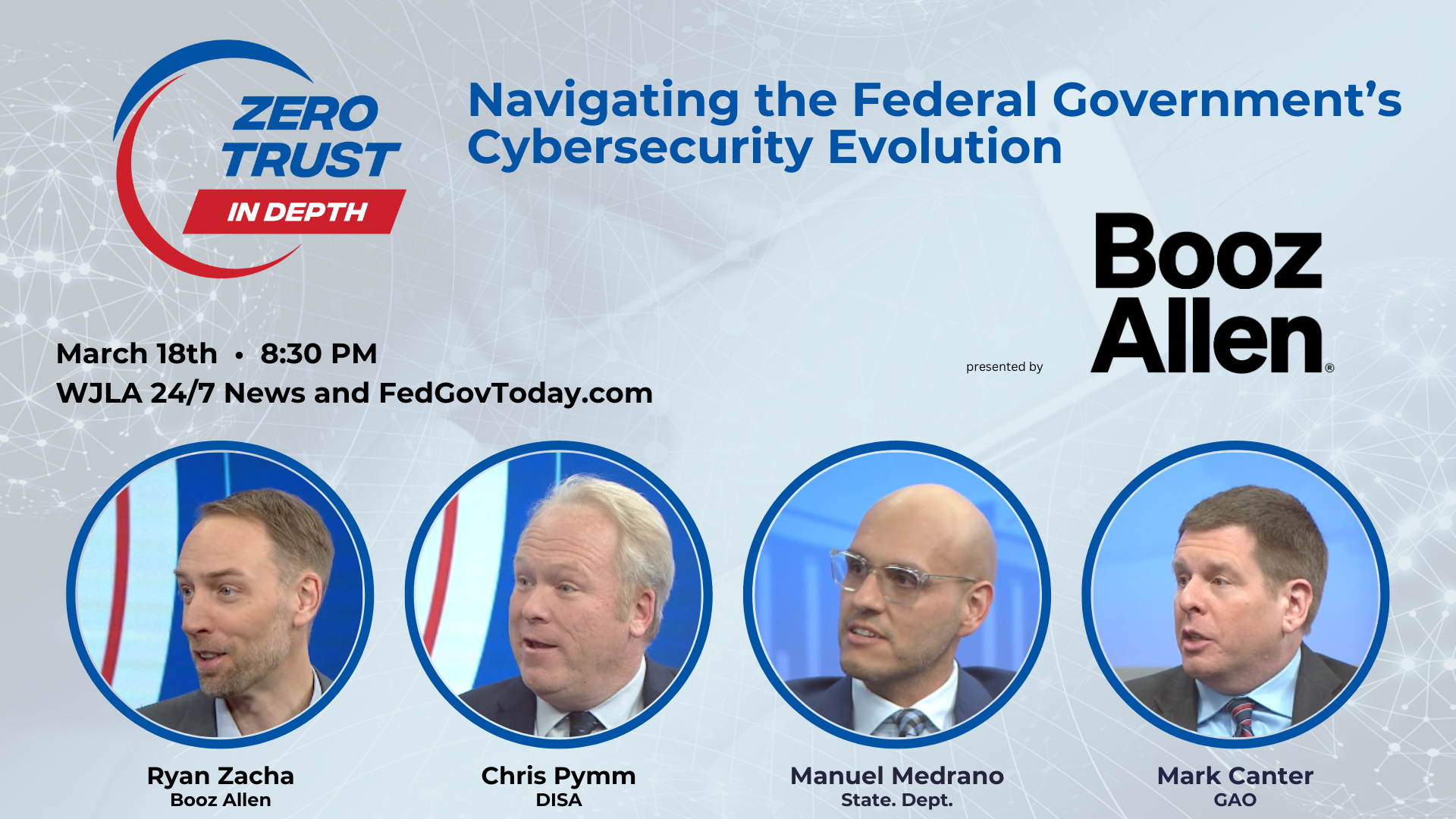Presented by Fortinet Federal
In this segment from Zero Trust: In Depth, Paul Blahusch, the Chief Information Security Officer at the Department of Labor, and Jim Richberg, Head of Cyber Policy at Fortinet and a Fortinet Federal Board member, discuss the strategic implementations and challenges of adopting Zero Trust within federal agencies. They delve into how the Department of Labor embarked on its Zero Trust journey, underscored by an early focus on identity management and propelled by the issuance of an executive order. The discussion also covers the broader impact of Zero Trust adoption across the government and private sectors, highlighting the advancements made and the hurdles, like vendor integration, that lie ahead. Both guests emphasize the shift  towards cloud-based services and the importance of seamless security measures that don't impede workforce efficiency.
towards cloud-based services and the importance of seamless security measures that don't impede workforce efficiency.
Paul Blahusch shared insights into the Department of Labor's proactive strides towards Zero Trust since 2018, with a significant push following the executive order in 2021. He outlined the department's approach, centering on the consolidation of identity sources and the adoption of Secure Access Service Edge (SASE) solutions, aiming for full deployment by June 2024. Blahusch's narrative underscores the journey from conceptual understanding to practical implementation of Zero Trust, illustrating how it's not only about enhancing security but also about enabling efficient and flexible access to resources for the workforce. His reflections reveal a vision where Zero Trust facilitates both security and operational efficiency, highlighting the ongoing efforts in logging, data categorization, and tagging to improve overall cybersecurity posture.
 Jim Richberg's contribution broadened the discussion, placing the Department of Labor's efforts within the larger context of Zero Trust's adoption across government and the private sector. He provided a perspective on the good news—increased resilience and adoption of Zero Trust—and the bad news, mainly the challenges related to vendor integration and policy enforcement. Richberg emphasized the critical need for the technology industry to work together to overcome siloed solutions and enable a cohesive Zero Trust ecosystem. His analysis touched on the impact of COVID-19 and the SolarWinds incident as accelerants for the adoption of Zero Trust, highlighting the transition from traditional perimeter-based security models to more flexible, cloud-based solutions. Richberg's insights point to the necessity of seamless security measures that support mission-critical activities without hindering the productivity of the workforce.
Jim Richberg's contribution broadened the discussion, placing the Department of Labor's efforts within the larger context of Zero Trust's adoption across government and the private sector. He provided a perspective on the good news—increased resilience and adoption of Zero Trust—and the bad news, mainly the challenges related to vendor integration and policy enforcement. Richberg emphasized the critical need for the technology industry to work together to overcome siloed solutions and enable a cohesive Zero Trust ecosystem. His analysis touched on the impact of COVID-19 and the SolarWinds incident as accelerants for the adoption of Zero Trust, highlighting the transition from traditional perimeter-based security models to more flexible, cloud-based solutions. Richberg's insights point to the necessity of seamless security measures that support mission-critical activities without hindering the productivity of the workforce.
Key Takeaways:
- Early Focus on Identity Management: The Department of Labor's early emphasis on consolidating identity sources has provided a strong foundation for advancing towards zero trust.
- SASE Solutions Deployment: The department's strategy includes deploying SASE solutions to enhance security and operational efficiency, with a significant milestone set for June 2024.
- Integration Challenges: The anticipated stagnation in zero trust efforts due to vendor integration challenges underscores the need for industry-wide collaboration.
- Impact of Remote Work: The COVID-19 pandemic and the shift to remote work have accelerated the adoption of zero trust principles, emphasizing the need for secure and efficient operations outside traditional office environments.


.png)
